
Key Points
- NYSE A/D Flashes a Bullish Divergence
- NYSE New Lows Fall Over the Past Two Weeks
- NYSE New Highs Still Have Work to Do
- S&P 500 Breadth Shows the Most Improvement
- Small Cap Breadth Gets a Bit Better
NYSE Breadth
The Advance/Decline line for the NYSE remains under pressure, below the declining 50-day moving average. At the same time, the S&P 500 is below its 50-day moving average. We note that while the A/D line has been making lower highs and lower lows since peaking in November, the S&P 500 has not undercut its September low. This leaves a bullish divergence in place. We now want to see the index break the moving average to the upside with an improvement in breadth. The January lows for the index remain a key reference point from a risk management perspective.
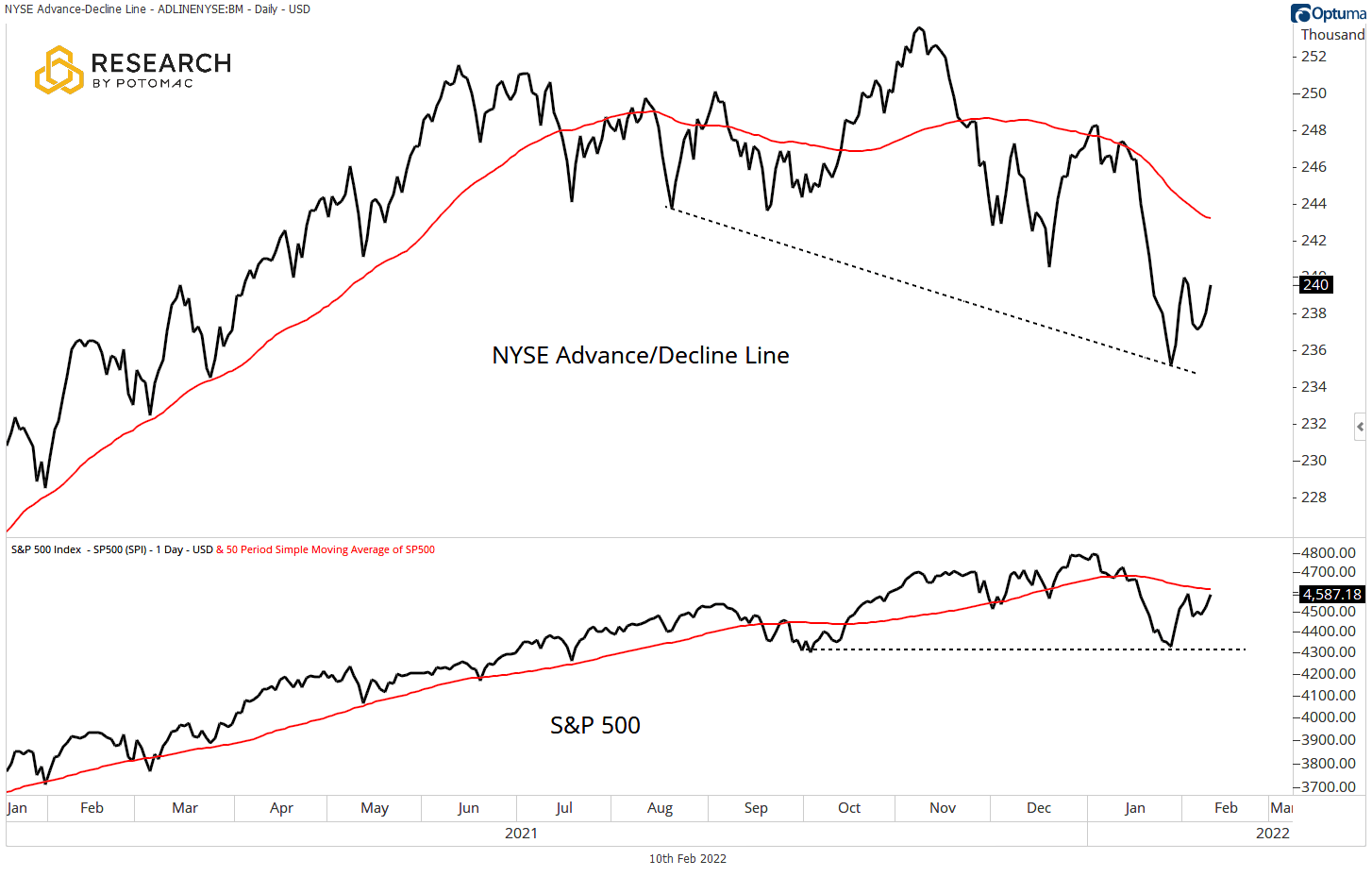
Since peaking in November, the five-day moving averages of issues on the NYSE making new 52-week and six-month lows have been declining. This is an important development, especially if the S&P 500 remains above the January low. A break of those lows that coincides with an increase in these metrics would be a sign that the bears are regaining control.
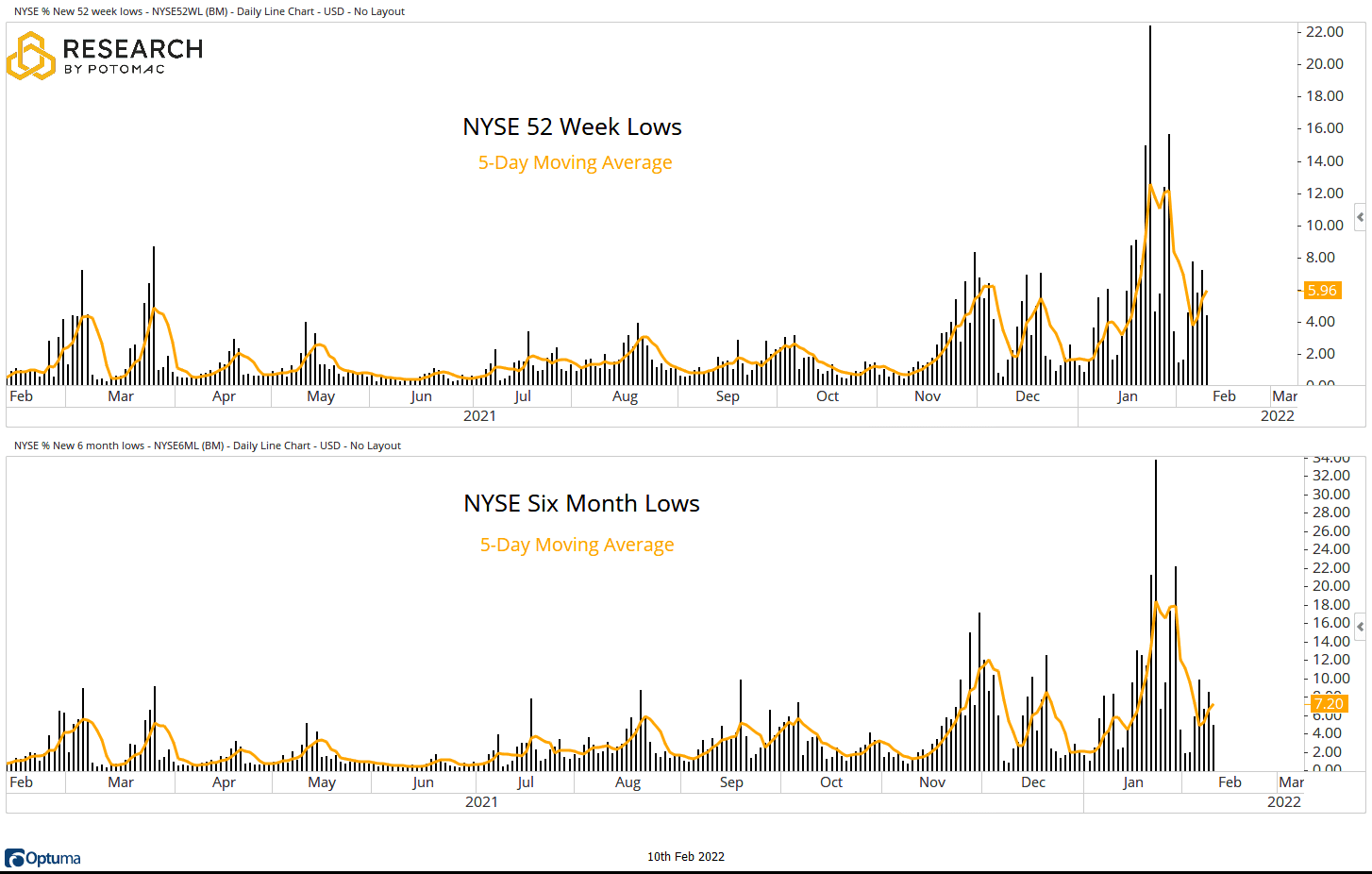
We have yet to see a material increase in the five-day moving averages of stocks on the NYSE, making new six-month and 52-week highs. This is not overly surprising, considering the damage that was done under the surface of the market for much of last year. Equity bulls will want to see these metrics improve as the S&P 500 moves higher to have confidence that the strength is likely to persist.
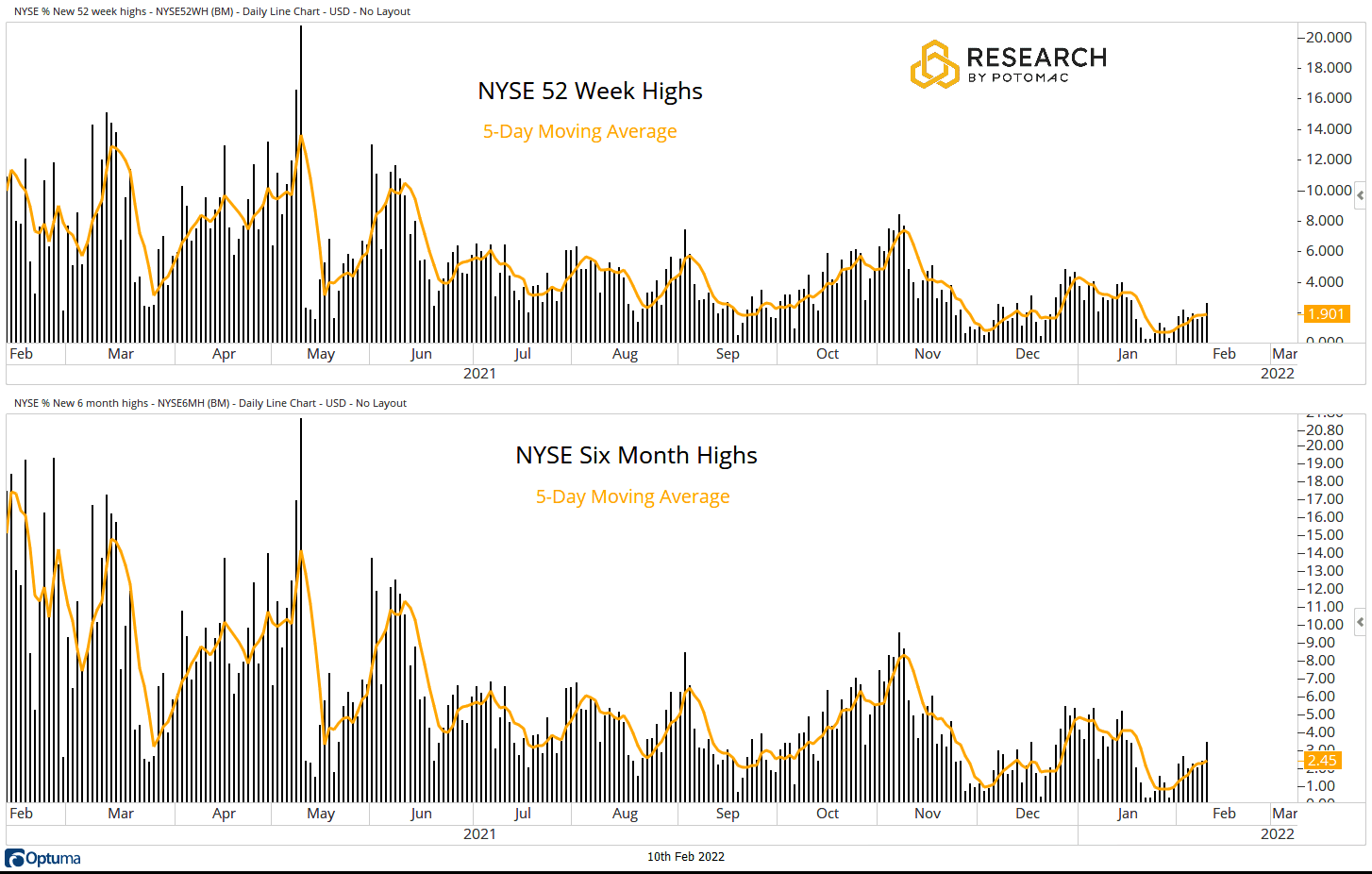
The S&P 500 has regained its 200-day moving average after briefly undercutting it at the end of January. The percentage of NYSE stocks trading above their respective 200-day moving averages has improved of late but remains in the steady downtrend that has been in place since the start of 2021. Breaking this trend would be a good step in showing that breadth is improving.
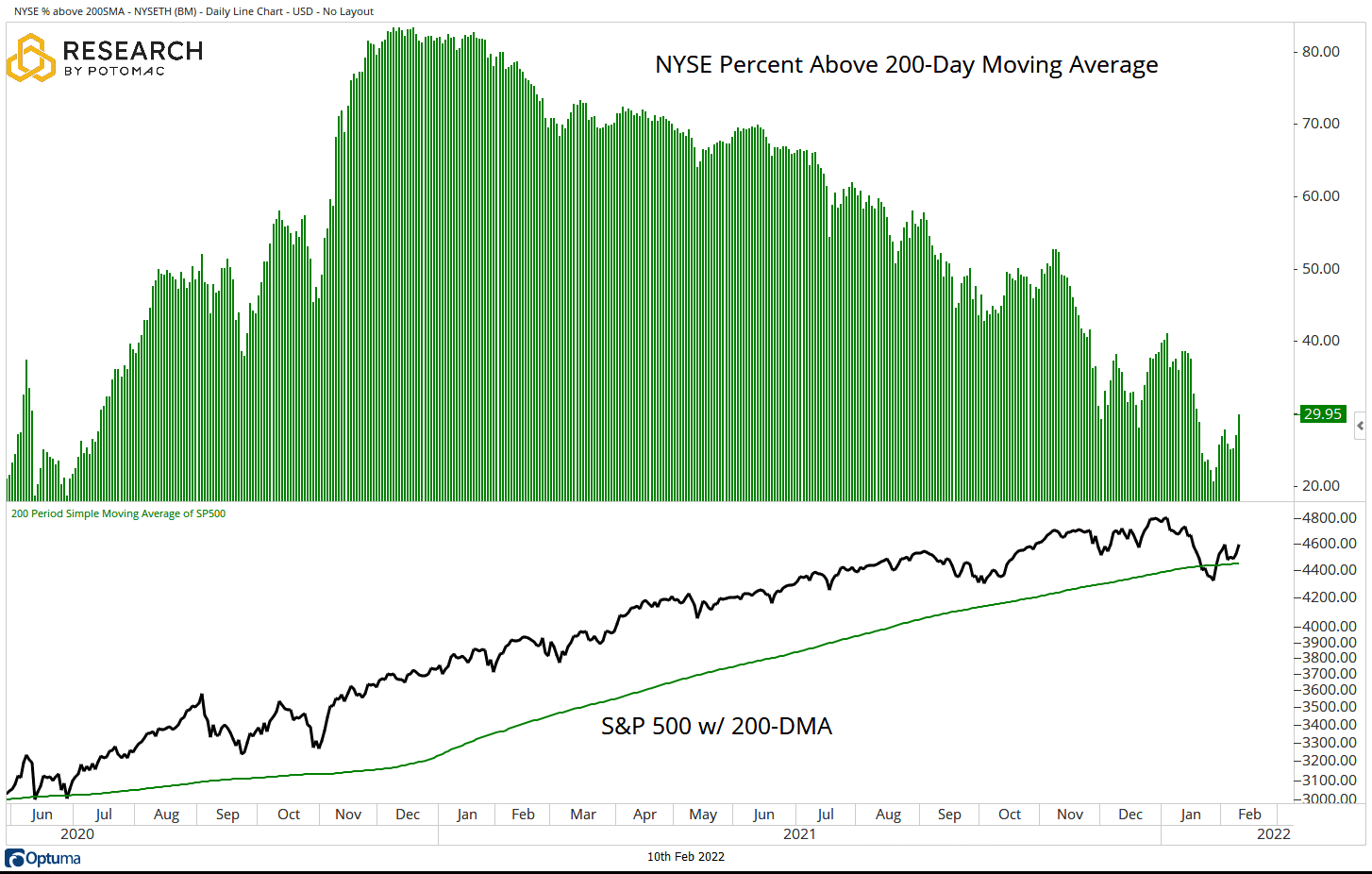
As the S&P 500 prepares to do battle with its 50-day moving average, the percentage of NYSE issues trading above their own 50-day moving averages has seen a spike over the past few days. This near-term improvement has not been enough to reverse the downtrend that has been playing out for more than a year. Reversing this trend would be an encouraging sign, especially if the reversal plays out with the S&P 500 regaining its moving average.
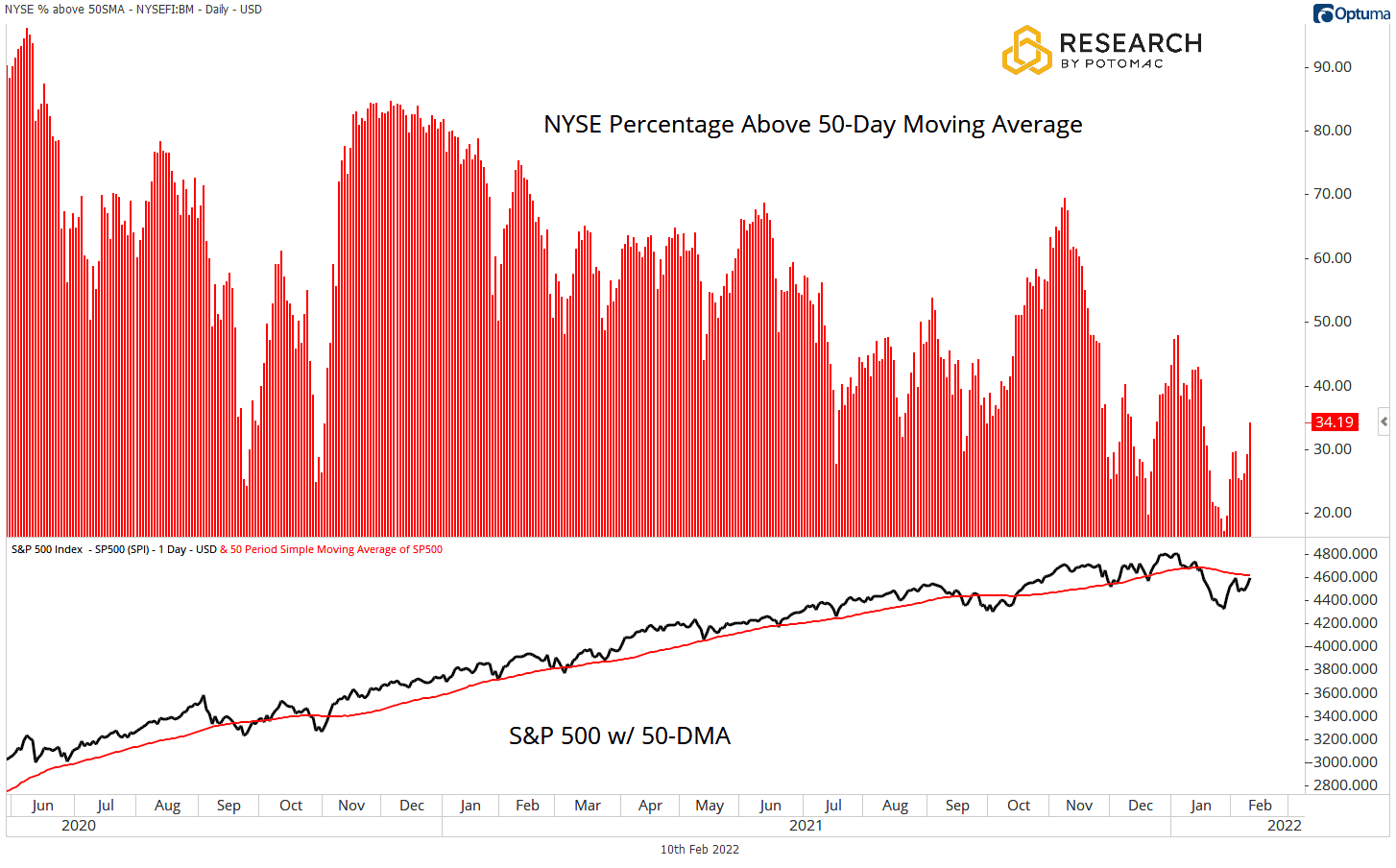
The percentage of NYSE issues trading above their respective 20-day moving averages has seen a sharp reversal over the past two weeks. This reversal plays out as the S&P 500 has rallied to retake its 20-day moving average.
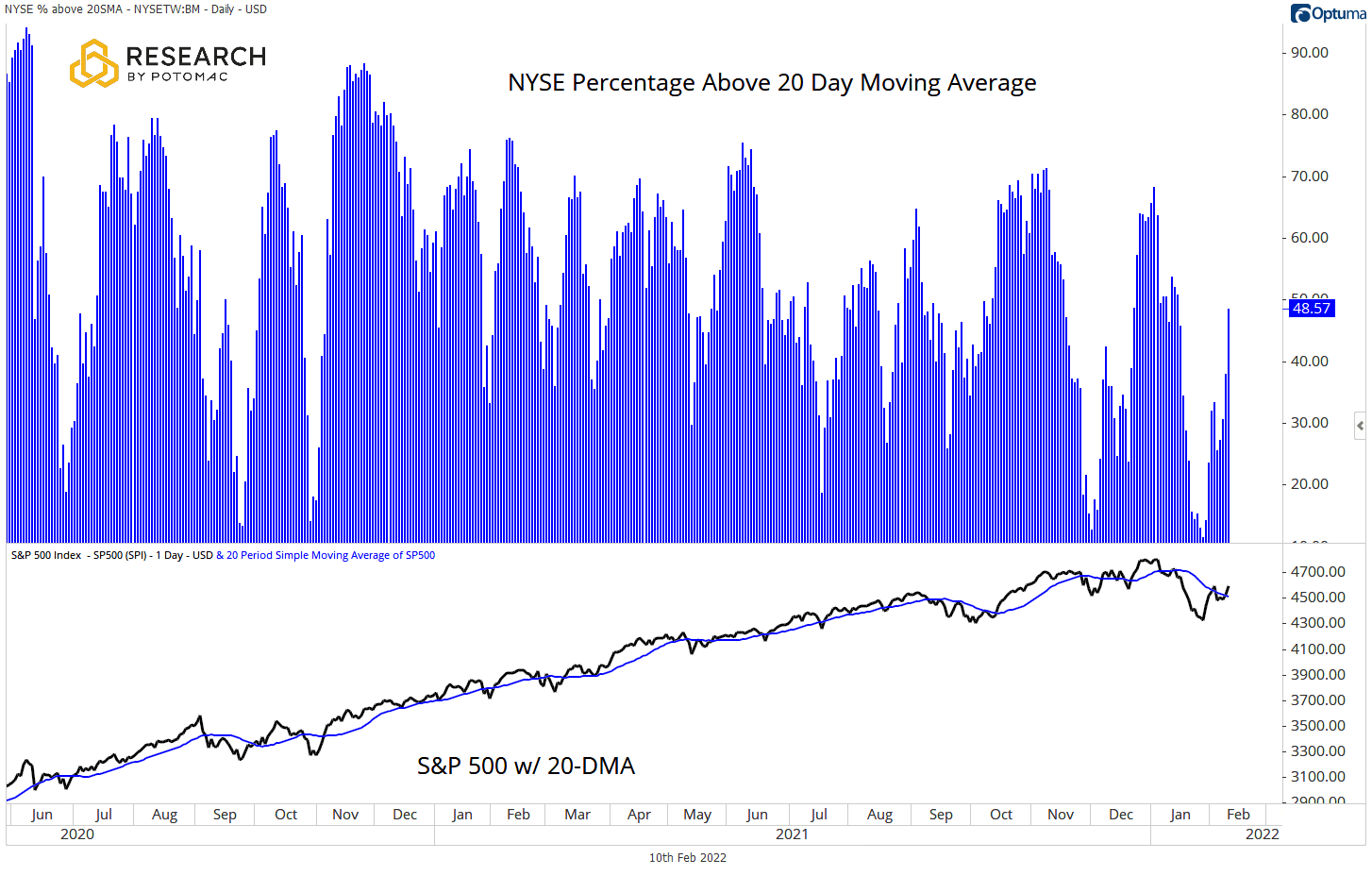
S&P 500 Breadth
Breadth metrics for the S&P 500 have improved over the past two weeks.
- Advance/Decline Line: Regains the 50-day moving average.
- Percent Above Their 200-Day Moving Average: 58% from 42% two weeks ago.
- Percent Above Their 50-Day Moving Average: 50% from 29% two weeks ago.
- Percent Above Their 20-Day Moving Average: 70% from 10% two weeks ago.
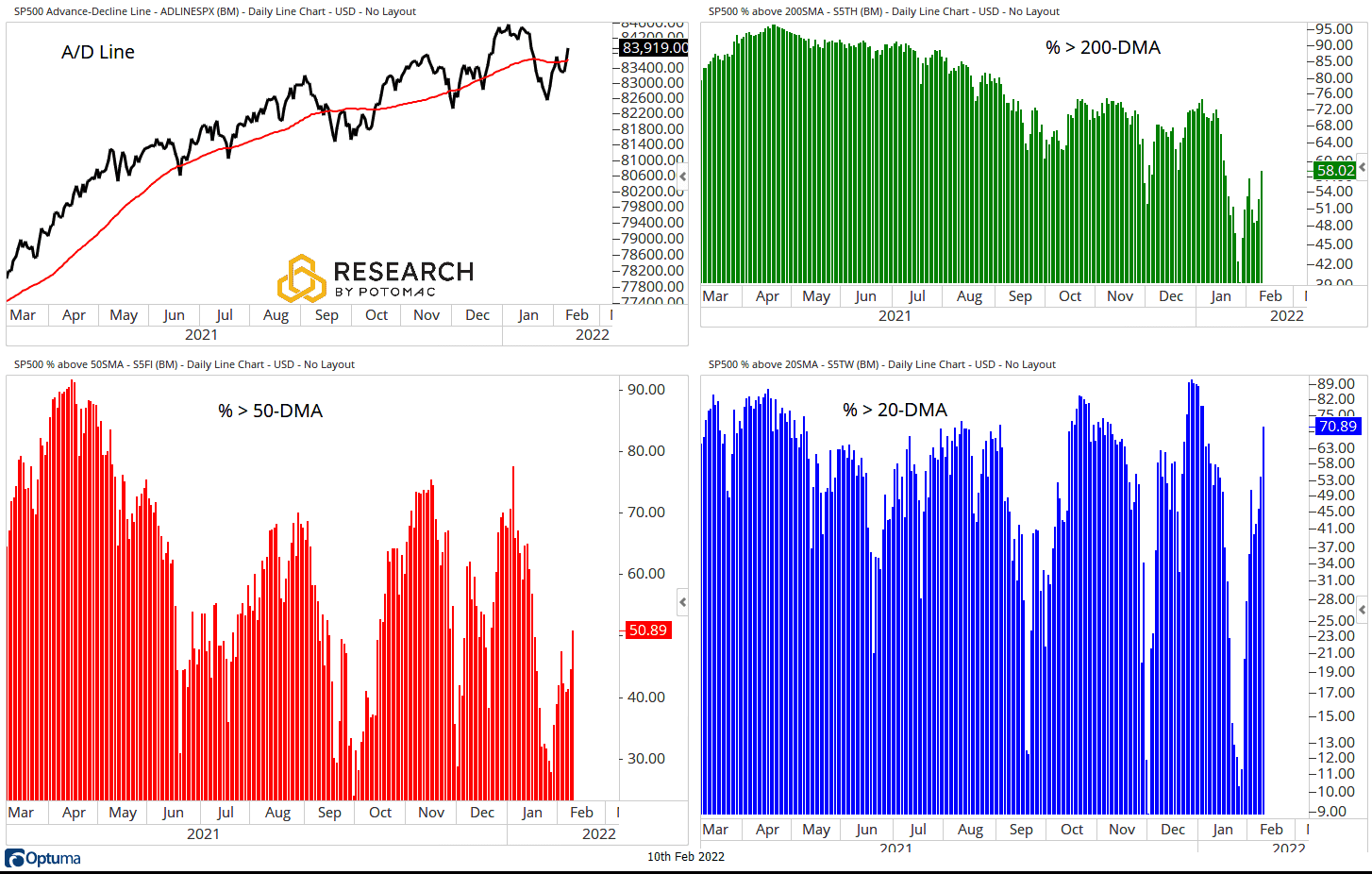
Small Cap Breadth
Breadth metrics for the S&P 600 Small Cap Index also weakened over the past week.
- Advance/Decline Line: Below the 50-day moving average, trying to bounce
- Percent Above Their 200-Day Moving Average: 40% from 31% two weeks ago.
- Percent Above Their 50-Day Moving Average: 37% from 20% two weeks ago.
- Percent Above Their 20-Day Moving Average: 54% from 10% two weeks ago.
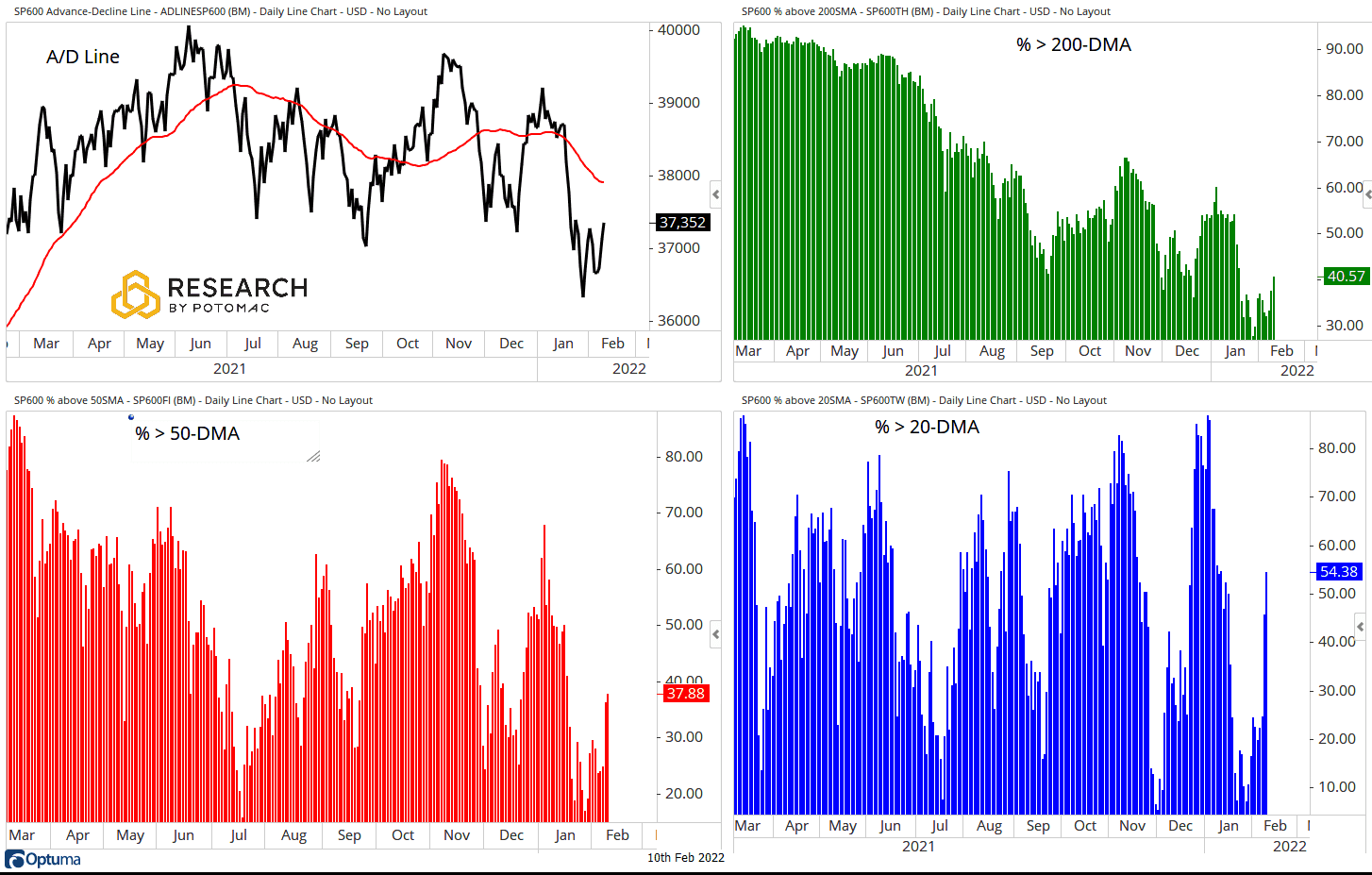
Take-Aways:
Disclosure: This information is prepared for general information only and should not be considered as individual investment advice nor as a solicitation to buy or offer to sell any securities. This material does not constitute any representation as to the suitability or appropriateness of any investment advisory program or security. Please visit our FULL DISCLOSURE page.
